Will New ATF Director Robert Cekada Maintain the Status Quo?
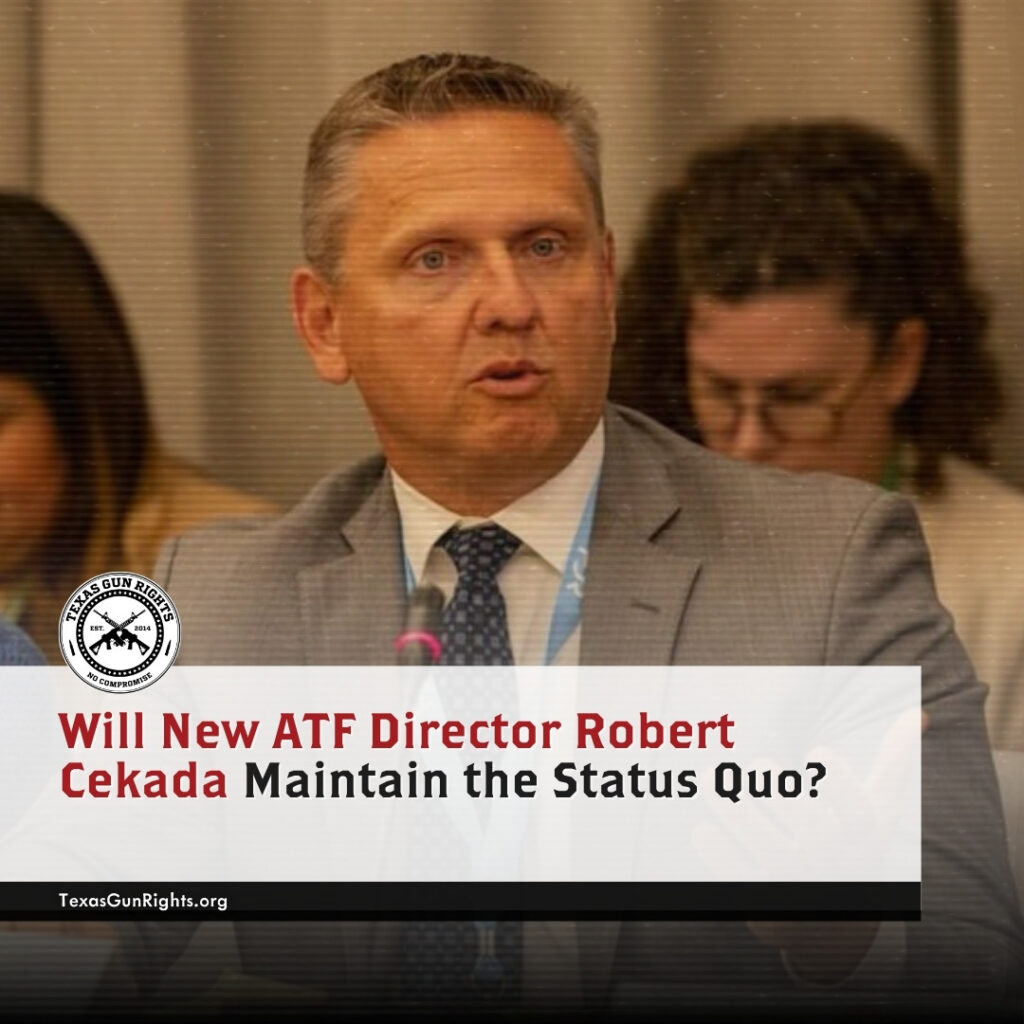
President Donald Trump has officially named career ATF bureaucrat Robert Cekada as the new permanent Director of the Bureau of Alcohol, Tobacco, Firearms and Explosives. Cekada — a 20-year ATF insider and former NYPD officer — now assumes command of one of the most deeply entrenched anti-gun agencies in the federal government. And Texas Gun […]
Hunt Files Repeal Bill as Cornyn Collapses and Democrats Push an Anti-Gun Extremist

Texas gun owners just got hit with a political triple shock. Congressman Wesley Hunt has introduced the Second Amendment Restoration Act — a bill designed to fully repeal the gun-control provisions Senator John Cornyn rammed through Congress with Joe Biden as part of the Bipartisan Safer Communities Act. According to Chris McNutt, President of Texas Gun […]
Why More Liberals and Minorities Are Buying Guns — And Why That Should End the Gun-Control Debate Forever

For decades, gun controllers claimed that firearm ownership was the domain of rural conservatives, that minorities had no interest in self-defense, and that LGBTQ Americans would never touch a gun. They were wrong then, and today the numbers prove it beyond debate. The latest University of Chicago Crime Lab study shows that over half of new gun […]
Senate CR Ends Shutdown While Keeping ATF Flush With Cash

The U.S. Senate recently slammed through another business-as-usual Continuing Resolution, ending the brief government shutdown. But, once again, they’re protecting the one federal agency that has spilled more political blood of innocent gun owners than any other: the Bureau of Alcohol, Tobacco, Firearms and Explosives. Yes, it’s true: with the Biden Administration gone, several of […]
Clyde Tells Bondi: NFA Registry Has No Legal Authority — Shut It Down
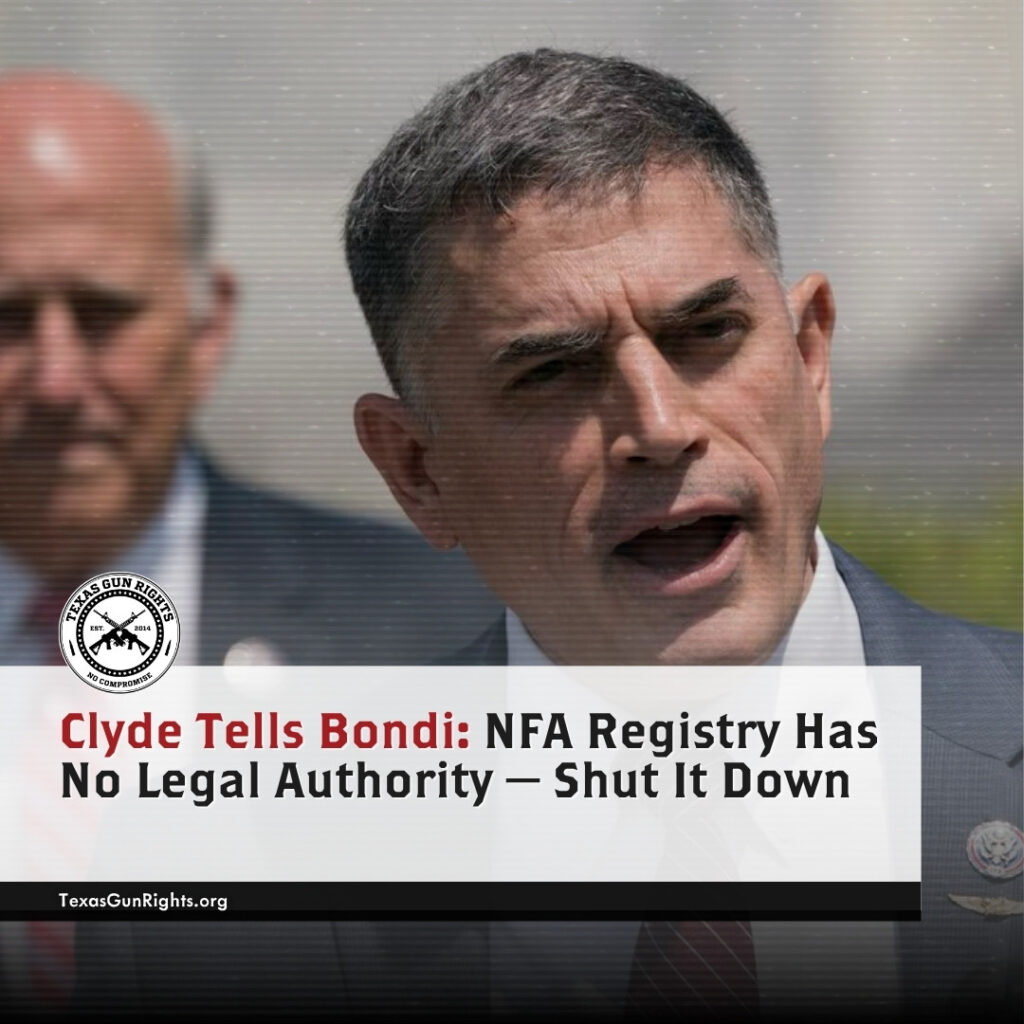
Gun owners have been saying it for decades. The courts said it in 1937. Congress said it again in July. And now, in a blistering November 10th letter, Congressman Andrew Clyde and more than thirty House members have put it in writing one more time: The National Firearms Act CANNOT be enforced without its tax. […]
“The Courts Aren’t Coming to Save You,” Warns Gun-Rights Leader
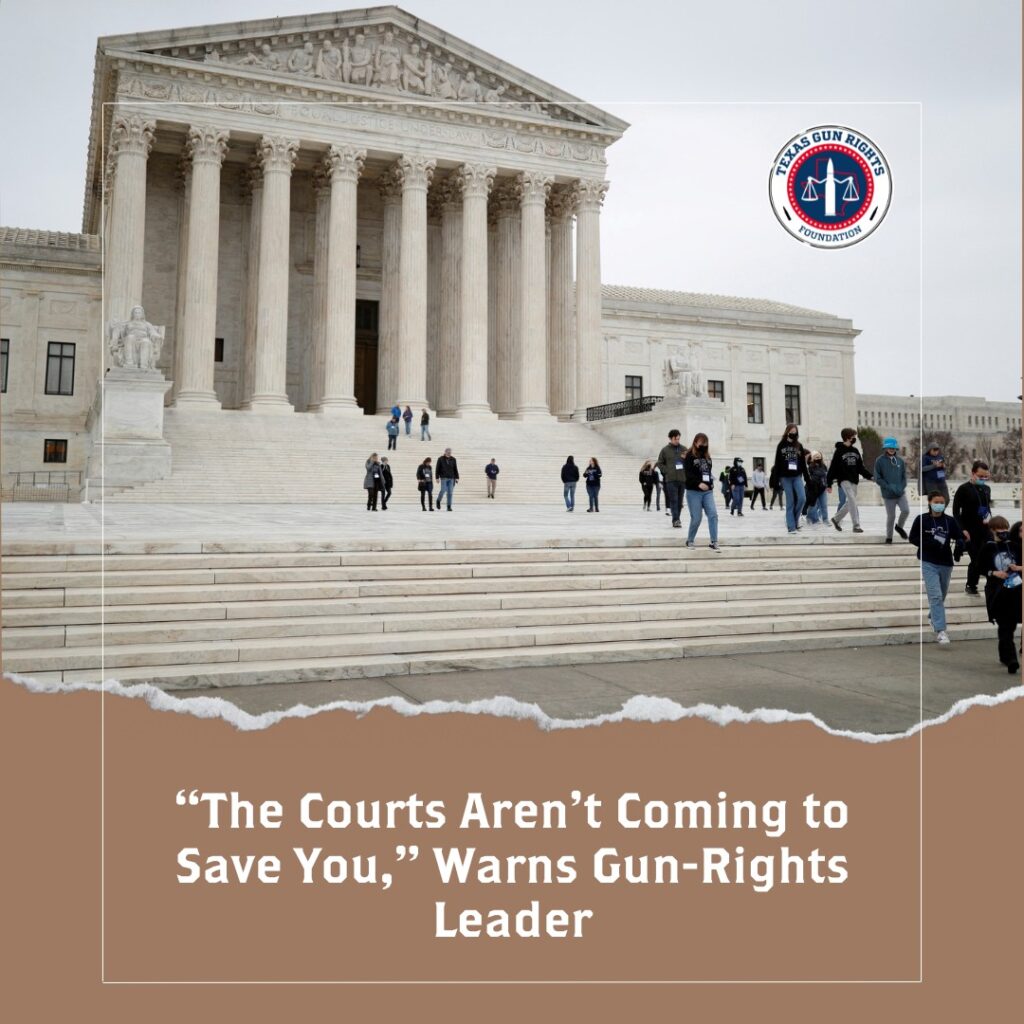
While many Americans still believe the courts are the key to restoring liberty, gun-rights leaders say it’s time for a reality check — because the courts aren’t coming to save you. That’s the blunt warning from Hannah Hill, Vice President of the National Foundation for Gun Rights (NFGR), who says far too many liberty activists […]
Zohran Mamdani: The Left’s Next Gun-Confiscation Messiah
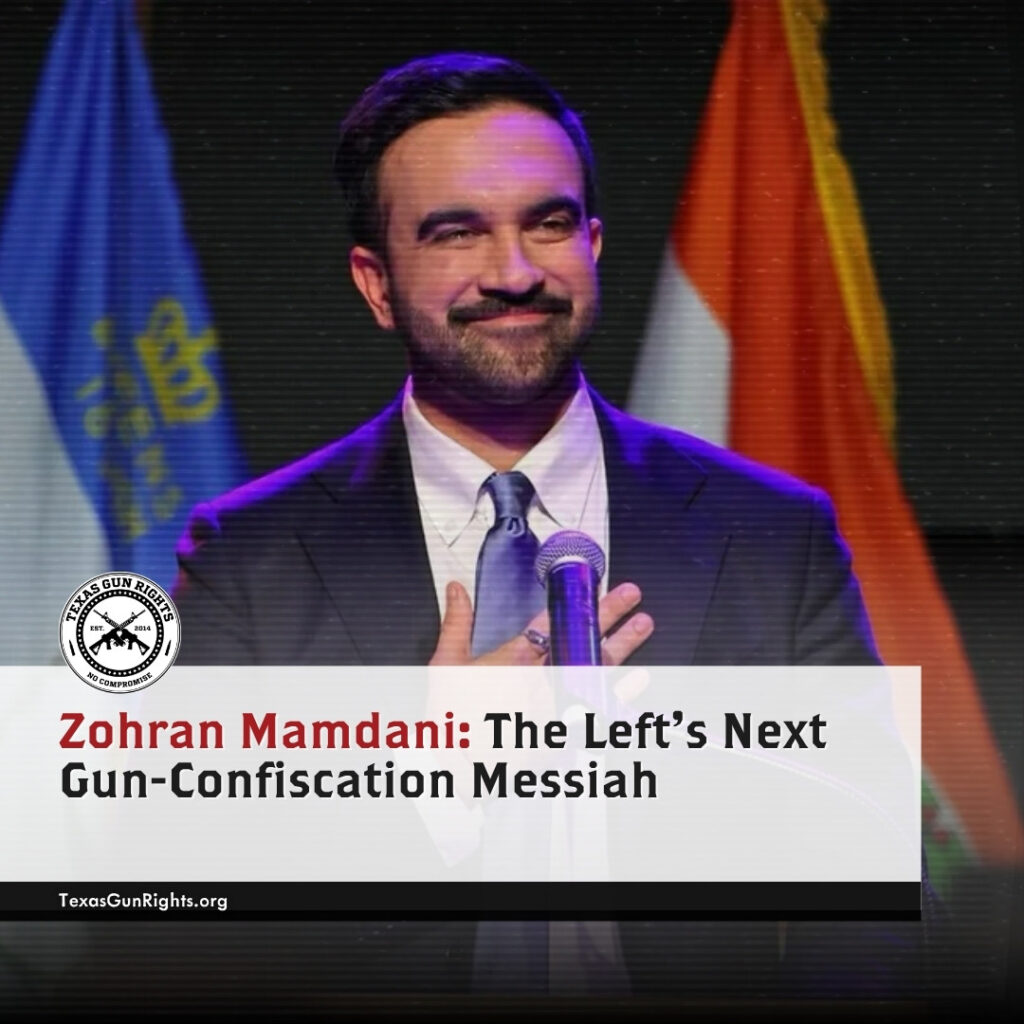
The Left has a new darling, and gun owners have a new warning sign flashing red. Zohran Mamdani — a self-described socialist and outspoken enemy of the Second Amendment — won the New York City mayor’s race, signaling that America’s largest city has lurched even further left. For decades, New York has been “blue,” but […]
Senate Ends Shutdown without Nuking Filibuster, Averting a Major Threat to the Second Amendment
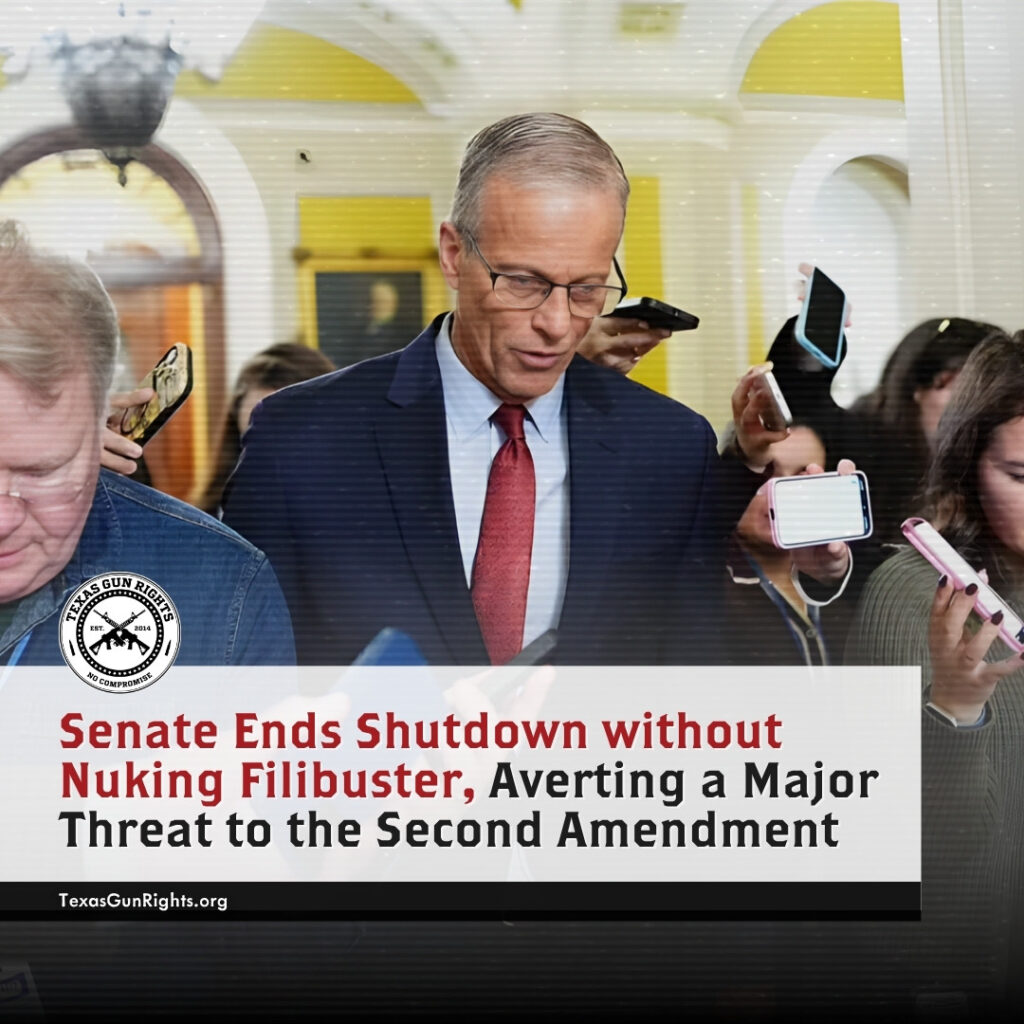
Gun owners in America just dodged a bullet. After days of tense political theater, the U.S. Senate finally voted to end the government shutdown — without nuking the filibuster, the single rule standing between freedom and federal gun control. In a dramatic turn, eight Senate Democrats broke ranks and joined Republicans to reach the 60-vote threshold needed […]
Gun Owners Reject Casino-Backed Establishment in Texas Senate District 9
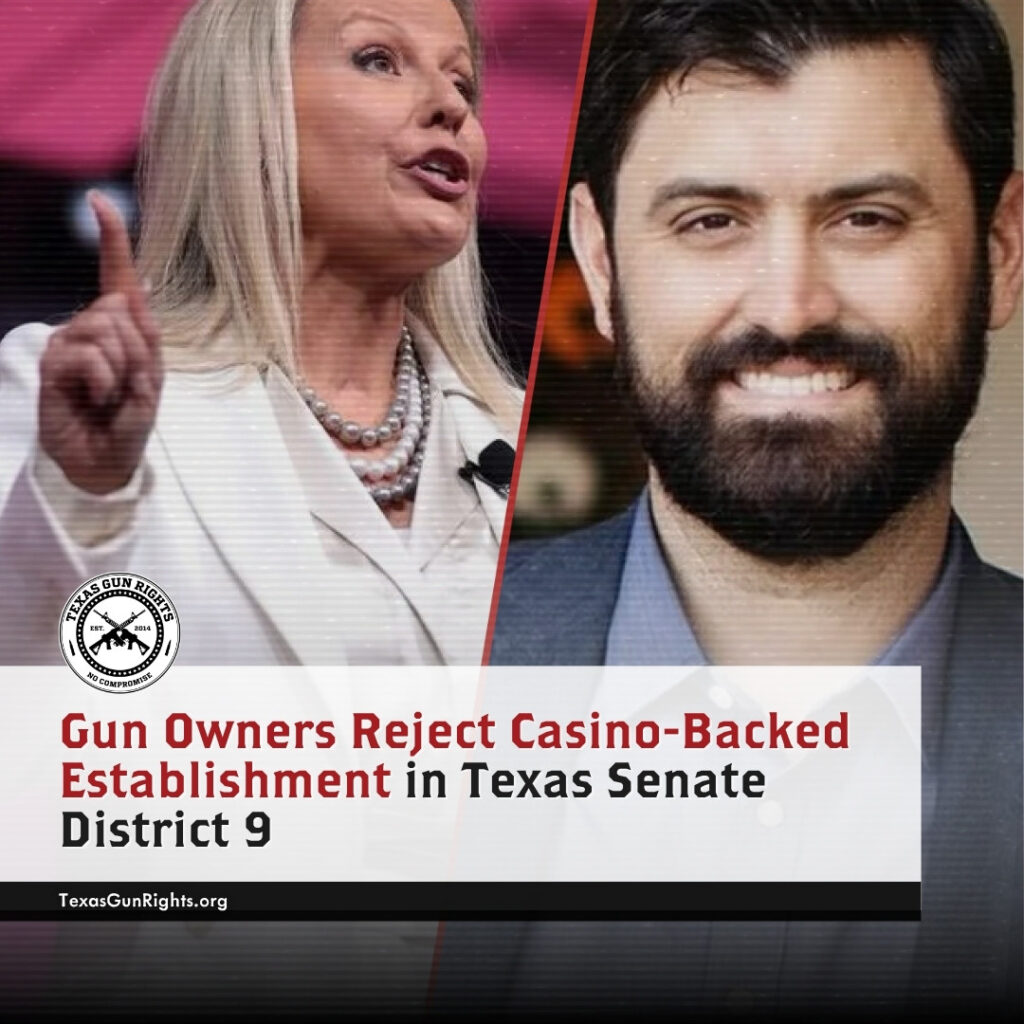
Gun owners in North Texas dealt a decisive blow to the establishment Tuesday night, rejecting millions in out-of-state casino cash and propelling Leigh Wambsganss, a proven pro-gun conservative, into a runoff election for Texas Senate District 9. Despite being heavily funded by the Las Vegas Sands casino empire, former Southlake Mayor John Huffman finished a distant third […]
WelcomePAC Finally Admits It: Gun Control Is Killing Democrats at the Ballot Box
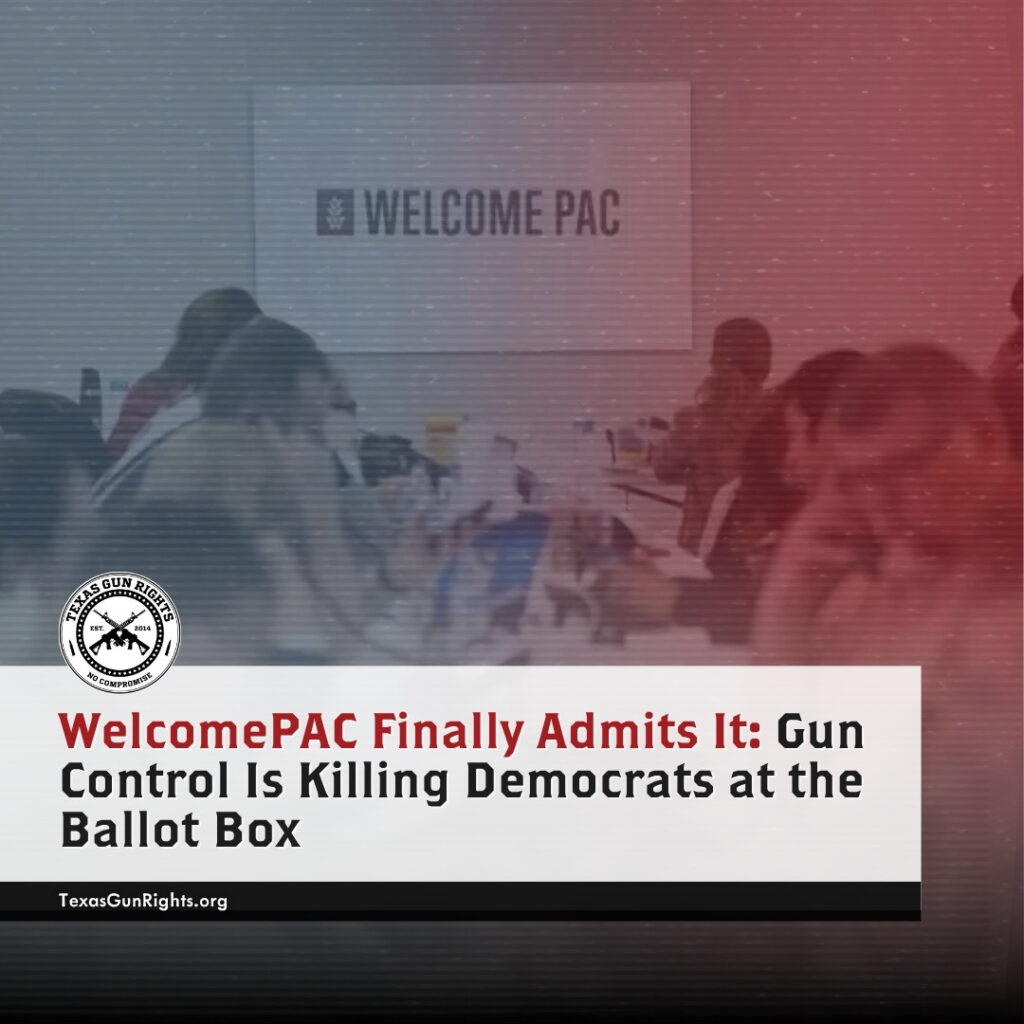
A new report from a group of self-described moderate Democrats has finally put numbers to what gun owners have known all along: the Democratic Party has marched so far left that it’s lost touch with America — and its obsession with gun control is one of the biggest reasons why. The 59-page report, titled Deciding to […]
